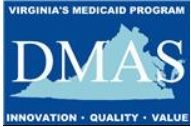 When a uniquely Virginia health care plan was rolled out at the beginning of 2014, there was apprehension and confusion among stakeholders. Emerging from the turmoil in the McDonnell administration and in the midst of a political battle in the General Assembly over the Medicaid gap, this initiative engendered consternation.
When a uniquely Virginia health care plan was rolled out at the beginning of 2014, there was apprehension and confusion among stakeholders. Emerging from the turmoil in the McDonnell administration and in the midst of a political battle in the General Assembly over the Medicaid gap, this initiative engendered consternation.
That consternation, it turns out, was from unnecessary friction. Commonwealth Coordinated Care (CCC), a concept sanctioned by the Affordable Care Act (ACA), is an effort to improve health care delivery to Virginians who are eligible for both Medicare (entitled to benefits under Medicare Part A and enrolled under Medicare Parts B and D) and full Medicaid. Medicare and Medicaid were not designed to work together and do not function seamlessly. This and the socio-economic characteristics of the client base create gaps and overlaps in services inviting waste and fraud.
The goal of this initiative is to provide Virginians with high quality, person-centered health care that focuses on their needs and preferences.
Virginia’s Department of Medical Assistance Services (DMAS) designed a demonstration that operationalizes a more effective, cost saving concept by establishing overarching Medicare-Medicaid Plans (MMPs). This should be an effort hailed across the political spectrum and embraced by health care providers, beneficiaries, and all citizens of the Commonwealth. But other than potential enrollees, most of us haven’t even heard about this effort to improve health care for some 76,000 eligible Virginians living in designated regions.
While less than 7% of Virginians receiving Medicaid may enroll in CCC, this is a substantial yet manageable test-bed for improved service delivery across the beneficiary spectrum. These recipients are arguably the most vulnerable, counting among them the elderly and disabled adults (over age 18). For many, those gaps and overlaps in coverage between programs create barriers to receiving effective health care. Enrollment alone can be daunting. Often the task of advocacy falls upon already overburdened Adult Protective Services personnel. Built into the CCC concept is a care management plan developed by a dedicated care manager.
What was unfortunate, beyond the fact that our state legislature is less innovative than the bureaucracy too many of its members use to shield their own ignorance, was a less than smooth rollout. However, most of the issues perceived by stakeholders were marketing errors rather than conceptual flaws. And all of the issues can be resolved rather simply.
 Sarah Broughton, CCC Outreach and Education Coordinator for the Department of Medical Assistance Services is travelling across the regions where CCC is available to spread the word about the program. In the process, she is explaining why someone would want to join the program and dispelling misperceptions. Assisting her is Anita Squire who is with the Virginia Insurance Counseling and Assistance Program (VICAP).
Sarah Broughton, CCC Outreach and Education Coordinator for the Department of Medical Assistance Services is travelling across the regions where CCC is available to spread the word about the program. In the process, she is explaining why someone would want to join the program and dispelling misperceptions. Assisting her is Anita Squire who is with the Virginia Insurance Counseling and Assistance Program (VICAP).
Sarah introduces the program by comparing Medicare and Medicaid to apples and oranges. While Medicare and Medicaid are two types of insurance, they are very different; they have different properties, rules, and they cover different things. When you press or squeeze apples and oranges, you get juice, but they have different textures and taste; they blend deliciously, but nature did not design that outcome. Medicare and Medicaid were not designed to work with each other and bridging the gaps between the two can be a difficult task. There is sometimes also unnecessary duplication of services.
The concept of CCC is reduce the burden of coordinating services by placing all services under one health plan. Three health plans emerged from a competitive selection process to become the programs (MMPs) supporting CCC. This is intended to be an enhancement to traditional Medicare and Medicaid by providing better coordination, better quality of care, and better health outcomes.
Persons eligible for CCC have a great deal of flexibility. That is part of the design of the program. Eligible individuals have the right to opt-out even after enrolling. There is no “open enrollment season” like other plans; it is a “rolling enrollment” that becomes effective generally on the first of the following month. Further, persons enrolled can change health plans if they decide they like the coverage of another plan better.
Eligible persons are those who are on full Medicare and full Medicaid. They must be 21 years of age or older and live in a region where CCC is being offered. This includes persons living in nursing facilities and those having an Elderly or Disabled Consumer Direction (EDCD) waiver. Anyone with other home and community based waivers, is in hospice, or has other comprehensive health insurance, such as TriCare for Life or a comprehensive Medicare supplement, is not eligible.
 One of the primary benefits with CCC is care coordination: providing all health services under one plan with one point of contact for all benefits and services. One aspect that has been popular is that one health insurance card serves all purposes. There is a 24/7 local call center for access to a nurse line. That nurse is able to access the health record. And there is a unified appeal process that is significantly better than the Medicare or Medicaid processes. Under CCC there is a care manager who helps beneficiaries through the appeal process which is still being monitored by Medicare and Medicaid.
One of the primary benefits with CCC is care coordination: providing all health services under one plan with one point of contact for all benefits and services. One aspect that has been popular is that one health insurance card serves all purposes. There is a 24/7 local call center for access to a nurse line. That nurse is able to access the health record. And there is a unified appeal process that is significantly better than the Medicare or Medicaid processes. Under CCC there is a care manager who helps beneficiaries through the appeal process which is still being monitored by Medicare and Medicaid.
The care manager services are why the program is called Commonwealth Coordinated Care. This is a particular enhancement for persons under the EDCD waiver who have not had this kind of assistance. This allows consideration for not only what the beneficiary needs but also personal preferences, engaging them in the planning process. Additionally each MMP offers a different set of expanded benefits that range from dental cleaning to vision services.
Every person who enrolls in CCC is assigned a care manager. That care manager is from the health plan and is responsible for understanding benefits, care that is being currently received, and assisting the beneficiary with coordinating care. The care manager works across the boundaries of Medicare and Medicaid and works with an interdisciplinary care team. That team may involve behavioral health services, primary care services, care givers and facilities, and others who can have a conversation across the continuum of care and care levels. This means a conversation with a beneficiary rather than one about the beneficiary; allowing participation in the care planning process.
Of course, when you hear the word enhancement you start thinking about the bottom line: what is going to come out of my pocket? Well, here is one of many best parts of this program: anyone who enrolls under this plan with any of the MMPs (Anthem, Humana, or Virginia Premier) has no premium. They also pay no co-pays to see doctors or specialists. If you are already paying a Medicare Part D co-pay, that will continue. If you are already paying patient liability or patient-pay for personal care services in the community or to a nursing facility, that will continue. But there will be no new costs for anyone.
The expanded benefits always draw questions. There are no additional co-pays or premiums for those provided by the health plan chosen.
Another significant concern is the relationships with doctors and other health care providers enrollees currently see. There can be a lot of different folks involved in one person’s care. First and foremost, during the transition to the CCC program, care should never stop. There is a continuity of care or transition period during which a person can continue to get care from their current provider for up to six months (or until the authorization ends, whichever comes first) after they enroll, regardless of whether or not that provider is in network. That is for any existing services or care plans.
If a provider tells a new enrollee that they will not provide services because they have enrolled in CCC, the beneficiary should immediately contact their care manager. The design of this program is to guarantee continuity of care.
After the six month transition period, use of in-network providers is required. But that six month period gives providers and the health plan the opportunity to bring them into network so that the continuity can be absolute. Of course, if the provider is uninterested in or unwilling to join the network, the beneficiary would then choose an in-network provider. The care manager is there to help identify an in-network provider that will meet their needs.
The process of rollout did feature an aspect that has created some issues. That aspect is automatic enrollment. All individuals who were identified as eligible for CCC began receiving correspondence informing them of the program and telling them that they would be automatically enrolled unless the opted out. This notification process was done by mail and wasn’t user tested. As a result, some Virginians did not understand that they would find themselves in the program. As the rollout has continued region by region, that notification process has been modified. Coverage for those automatically enrolled in the last areas affected, Northern Virginia, Roanoke, and Charlottesville, began in October. There was an exception to automatic enrollment and that was for areas where there was only one health plan available.
The availability of health plans depends upon the region and location in which an enrollee lives. Some areas are covered by all three MPPs and others only one. If in an area where there is only one MPP, eligible persons have to call a broker to opt-in. That broker is also the one to call to opt-out or to switch plans. There is a single point of contact for enrollment, disenrollment, or change to a health plan. The third party broker for the plan is Maximus.
Maximus is able to look up doctors and other health care providers and which of the plans in which they are in-network participants. They are there to help enrollees make informed decisions about health care coverage. They can also help answer questions about the comparison chart.
CCC Provider Comparison Charts
These charts were distributed in the letters that went out to eligible beneficiaries. These contain a great deal of information and maybe a little overwhelming for some of the audience. Notice that the localities in the region for each health plan are listed as well as the participating hospitals and the expanded benefits. The Maximus broker will help enrollees make sense of the comparison chart.
If after receiving the series of letters about the program an eligible individual did not opt-out, enrollment would be automatic in areas where there is at least two MPPs. There would have been a letter some 60 days prior to enrollment about the automatic assignment and which health plan in which assigned. If the individual still did not contact Maximus, there would have been a follow-up letter stating the enrollment would take effect in 30 days. Upon enrollment a welcome packet from the new health plan would arrive. That packet would include a new insurance card (for all services) as well as a summary of benefits.
If after discussing the options with the broker, the individual still needs some additional support and counsel to weigh the risks and benefits there is assistance available through the Virginia Insurance Counseling and Assistance Program (VICAP). These counselors are available through the local Area Agency on Aging (AAA). VICAP provides a broad range of insurance counseling assistance to the elderly and adults with disabilities and are a valuable resource well beyond the CCC program.
The Coordinated Care Educator at VICAP, Anita Squire, is helping Broughton raise awareness across the state. Her experience is that like any change, CCC creates a bit of anxiety but that as she discusses the program, people warm to it as their concerns are dispelled; many are sold when they hear they only have to carry one insurance card or some other benefit offered with the demonstration that appeals to them. Squire is even willing to provide support by conducting a conference call with a Maximus broker when requested.
Squire also works with family members and providers too. She is available to provide information, guidance and assistance to all the stakeholders and as a liaison to the local AAA counselors. Collaborating with DMAS, she provides training wherever required, whether is it for presentations to local civic organizations, individuals in a senior citizen apartment complex, an assisted living facility, or to staff and employees at facilities.
There is also a role in all of this for the long term care ombudsmen. Like the coordinated care advocates, they are there to make certain the beneficiaries know and understand their rights. In this case, that they have the right to determine whether or not they want to participate and if they do that they can choose the health plan they want. This is not the right of a friend or a social worker or a physician, but that of the individual unless they have legally given consent for that person to act for them. The ombudsman is the one who assists those in the CCC program who receive long term care services whether in a facility or at home (with the EDCD waiver). The coordinated care advocates are there to assist those who are “community well.” They are also there for family members or others responsible for persons who are unable to act on their own behalf.
About those bumps in the rollout: The automatic enrollment portion of the rollout created the issues. Recipients of the letters ignored, misplaced, misunderstood, and for whatever reason did not act. Some of them were suddenly enrolled in a new plan that they did not understand required action for continuity of care and/or whose providers were not participating. They were able to remedy that by opting-out. But that has not always gone without issue. Some of them found themselves without Part D coverage after opting-out. DMAS can resolve all of these issues, but the beneficiaries do not always know who or what to ask. This has frustrated not only beneficiaries but also family members and social workers who were working in the dark. That is where the ombudsman, advocate, or VICAP counselor can take up the knowledge slack.
About now there is likely another frustrated set of Virginians in the latest regions to experience the automatic enrollment/assignment process. This should let them know that they need not throw up their hands and that there is help available.
And despite a General Assembly that won’t act, Virginia’s executive bureaucracy has advanced the ball on health care for at least some Virginians. In fact, Virginia is establishing itself as a trailblazer in this regard.



![Saturday News: “Trump’s latest tariff TACO probably won’t make your life more affordable”; “The Epstein Email Cache: 2,300 Messages, Many of Which Mention Trump”; “[MTG] questions if Trump is still the ‘America First’ president”; “Jim Ryan tells all: ‘What did the Governor know, when did he know it?’”](https://bluevirginia.us/wp-content/uploads/2025/11/montage1115-238x178.jpg)







![Saturday News: “Trump’s latest tariff TACO probably won’t make your life more affordable”; “The Epstein Email Cache: 2,300 Messages, Many of Which Mention Trump”; “[MTG] questions if Trump is still the ‘America First’ president”; “Jim Ryan tells all: ‘What did the Governor know, when did he know it?’”](https://bluevirginia.us/wp-content/uploads/2025/11/montage1115-100x75.jpg)

